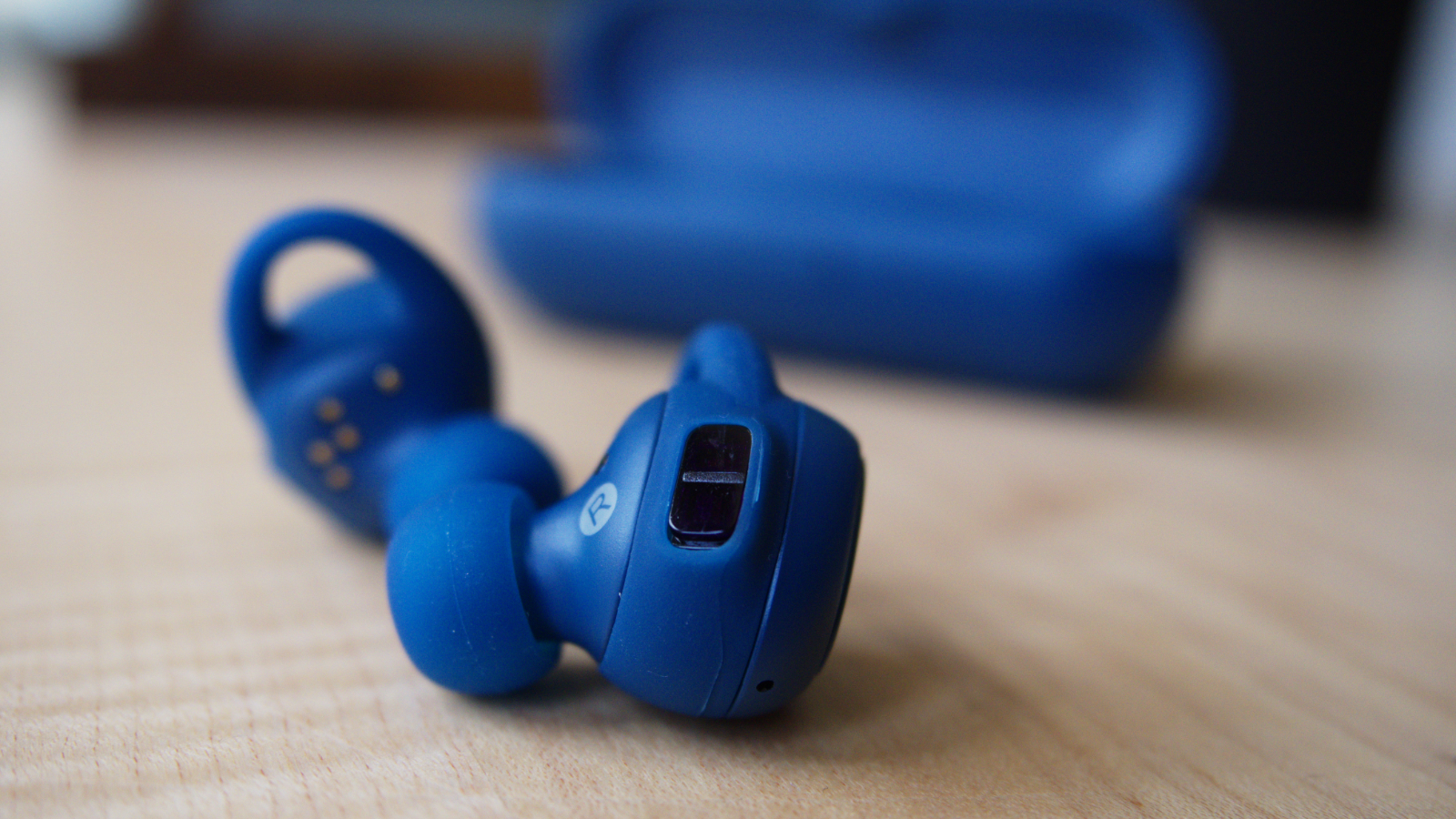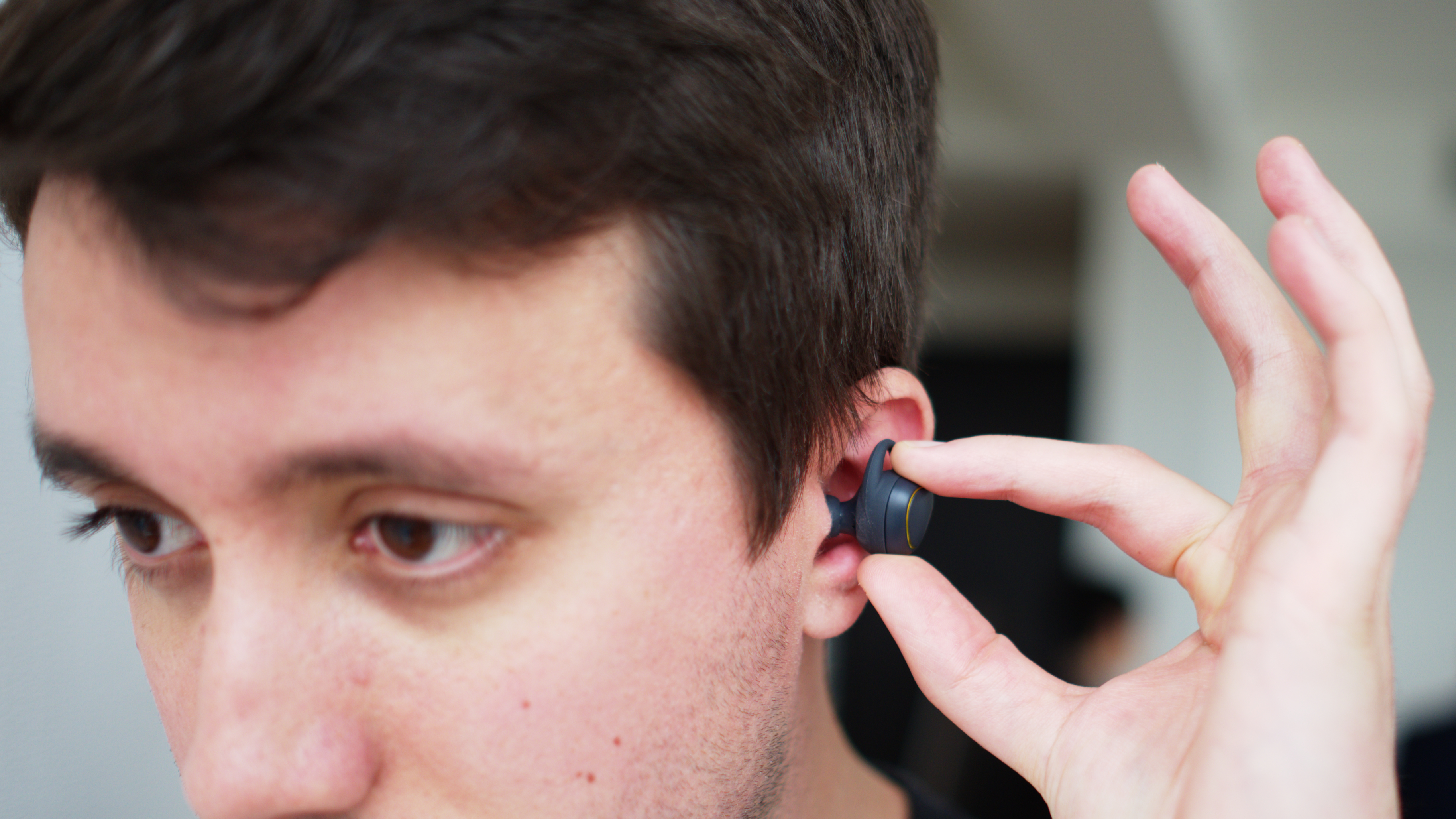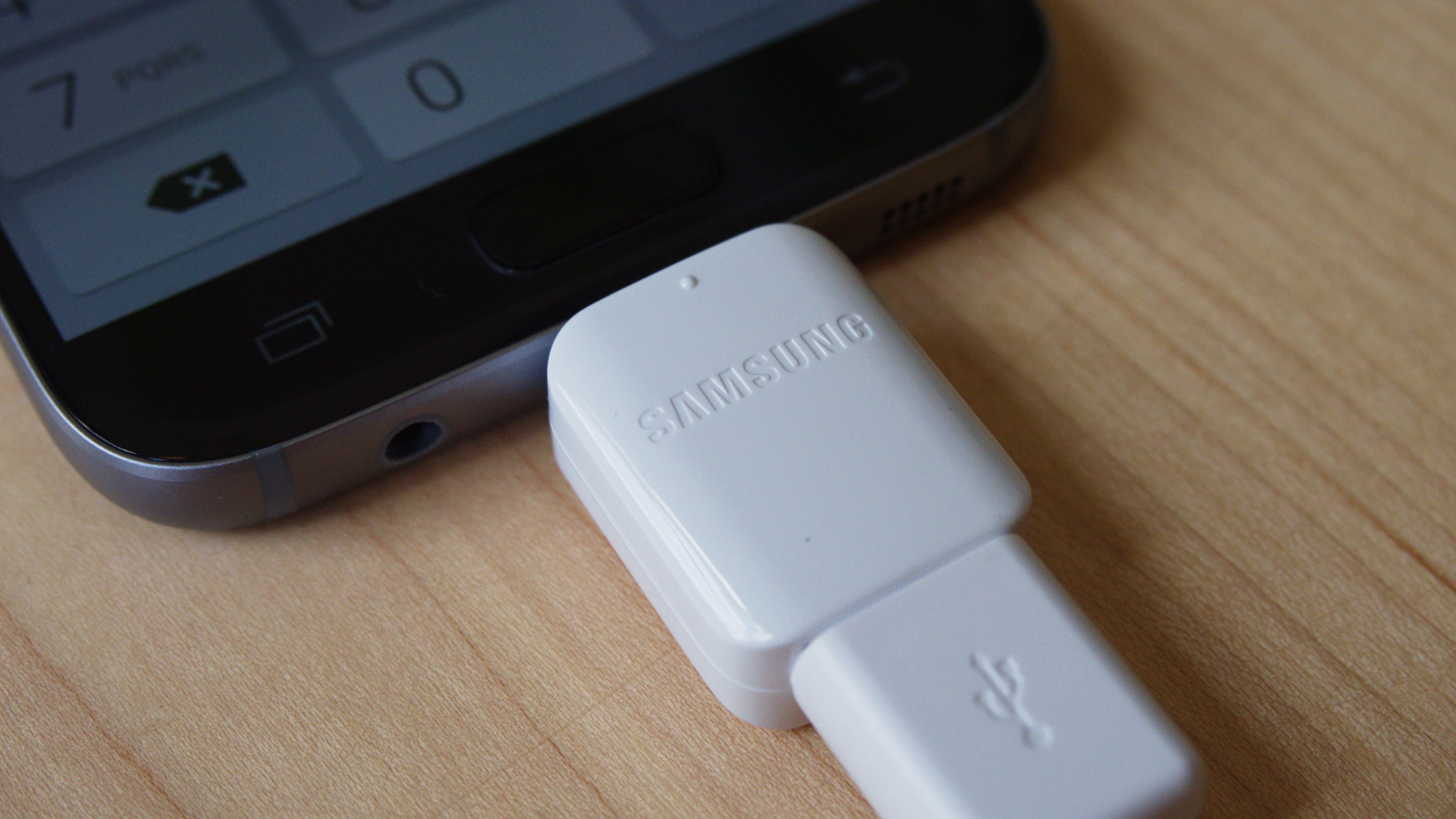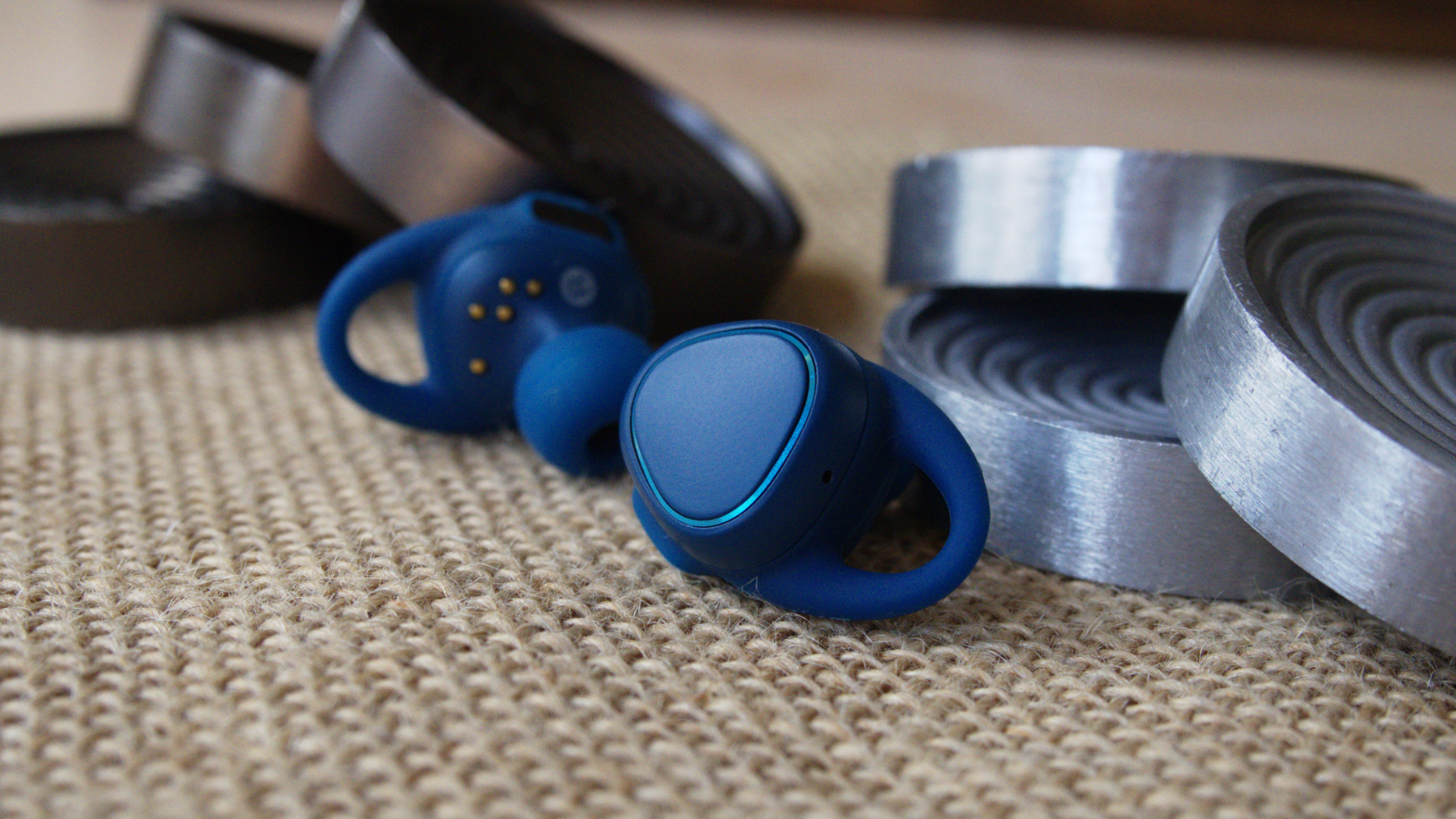TechRadar Verdict
If you're looking to cut the cord and step onto the treadmill, Samsung's Gear Icon X are a fully-featured and comfortable, albeit flawed solution.
Pros
- +
Stunning design
- +
Onboard storage
- +
Compatible with iOS
- +
Super snug fit
Cons
- -
Sound quality isn't stellar
- -
Short battery life
- -
Expensive
Why you can trust TechRadar
When Samsung announced the Gear Icon X in June, the odds for success were stacked in its favor. But now, things are different. Apple launched its AirPods alongside the iPhone 7, and Bragi has stepped up with a new, improved (and cheaper) set of wireless earphones, to name a few high-profile examples.
Despite the increase in competition, the Gear Icon X nail the basics (no easy feat) and even offer a few perks that the others don't. But it comes at a higher $199 (£169, AU$279) price point, which puts Samsung's offering well above the $159 and $149 tags on the AirPods and the upcoming Bragi Headphone, respectively.
All in all, the Gear Icon X are an impressive feat of engineering that deliver basic fitness tracking features and serviceable sound quality. But the high price, spotty battery life and occasional signal drop-outs serve as constant reminders that, if this really is the future of headphones, we're content at the moment being stuck in the past.
Design
The Gear Icon X arrive packaged in an unassuming cylindrical charging case that can fit easily into a pocket or purse. Popping the case open reveals the two earbuds, each designed with a minimalistic touch and nestled into their respective charging docks. As indicated by markings on the inside of the case, there's one for your left and right ear. There are LEDs on the case to indicate the charging status of the earphones, as well as the case itself.

The units release from their nest with minimal effort and - just like that - are ready to go. There are no on or off switches located on the Gear Icon X. In fact, there aren't any buttons whatsoever. The heart rate monitors built into each of the earbuds can sense when you've placed them into your ears and power on to pair or reconnect with your device. Creepy, yet very cool.
Once inside of your ears, the Gear Icon X automatically connect to each other and establish a Bluetooth connection with your smartphone. It's not as effortless as plugging in a set of wired headphones, but the process here is as simple as can be.
Controlling the Gear Icon X will feel familiar if you've used any set of headphones with an inline remote. Except, again, there are no buttons here. To mimic those button-pressing actions, you simply tap and swipe on the touch-sensitive section of the buds within the colored rim.
Sign up for breaking news, reviews, opinion, top tech deals, and more.

To turn up music, press a finger to the touch-sensitive area and then slide upward. To skip tracks, tap twice. Want to answer a call? Give the Gear Icon X a tap when you have a ring coming through. It's all intuitive and easy enough to execute, even when you're jogging.
Aside from the earphone-charging case, the Gear Icon X is fitted with medium-sized ear tips and fins installed. The purchase also includes a set of small and large rubber tips and fins, and a microUSB charging cable.
Performance
The Samsung Gear Icon X primarily act as headphones, but they do more than just play back your music. Taking a few cues from fitness trackers and smartwatches, these buds can also track your heart rate and operate independently of your smartphone.
This set of headphones utilizes the Samsung Gear app - an Android exclusive - to flex its smart functions. It's important to note that it won't work on phones with an OS earlier than KitKat and a RAM count lower than 1.5GB.

We had originally thought these to be Android-exclusive headphones, but buried deeply in online documentation, it's mentioned that these will actually work on iOS complete with touch functionality. (It's true, they do!) However, without the S Health app, you won't be able to record your workouts.
Listening to music with the Gear Icon X is an enjoyable experience overall, however, they fall short compared to many cheaper wired headphones - and even some wireless ones, like the Optoma NuForce BE6i. That's partially due to Samsung opting for the subpar SBC Bluetooth audio codec rather than something capable of higher-quality data transmission, like AptX.
For when you want to leave the smartphone at home, the surprisingly comfortable Gear Icon X can be loaded with tunes and are stocked with an impressive 4GB of space to take advantage of.

Samsung shared that, interestingly, instead of storing the music onto one bud and beaming it over to the other to play in stereo mode, each bud actually has 4GB of onboard storage. When you trigger a song, it plays said file on both and syncs it up. It's Samsung's attempt to minimize the pesky signal cut-outs that are all too common with products like this. And for the most part, it works well here. But the system isn't completely immune to drop-offs in signal, a problem that occurs more frequently if you live in a crowded city like I do.
Aside from entertaining you, the Gear Icon X can, as you may have guessed, do a bit of fitness tracking by way of the built-in heart rate monitors in each bud. To trigger a workout, tap and hold the touch-sensitive spot on the earbud that you've designated as the master.
Any and all activity you do during a workout will be recorded in Samsung's S Health, whether it's done through that app or select third-party apps, like Strava and Under Armour's Map My Run.
When you exercise outside, the ambient sound mode will help you stay safe. By pressing and holding a finger to either of the Icon X units, you'll eventually hear the external microphones kick on. This is super handy if you need to keep an ear open to traffic, but still want to listen to music or a call.

During our hands-on with the Gear Icon X, a Samsung rep stated that you'll be able to squeeze six hours of use when streaming music over Bluetooth from your smartphone. However, if you're listening to the music stored onboard, you'll only get three hours of sound.
After updating the Gear Icon X to the latest software, we tested out the battery duration. For some background, each of the buds contains a 47mAh battery and the case houses a 315mAh battery. Compared to what Samsung told us, our experience differed, to say the least.
On average, the battery life lasted for about two hours of normal use before needing to recharge in the cradle. It's super handy that the cradle can power up the Gear Icon X, but we even found that to drain rather quickly. You can expect to get two (three if you're lucky) charges out of it before you need to plug the case in for a refill. To provide some context, Apple's AirPod cradle is said to power up to 24 hours of additional use.

Lastly, it's worth mentioning that while these aren't waterproof, the Icon X are built with a nano coating that can resist light exposure to liquid. We liked that even with a little sweat in the mix, these headphones stayed in nicely during a workout.
Final verdict
It's clear that Samsung is onto something big. The design and list of features are forward-thinking and evocative of the company's current lineup of connected products in many ways. But in its current state, the Gear Icon X is not much more than a polished proof of concept that covers the needs of music lovers who hate wires, and fitness buffs, but only until the battery runs out.
Even if the price we're lower, we'd issue a disclaimer that the battery and sound quality will likely disappoint. So, at its current $199 (£169, AU$279) price point, it's best if you hold onto your money and wait for the next generation.

Cameron is a writer at The Verge, focused on reviews, deals coverage, and news. He wrote for magazines and websites such as The Verge, TechRadar, Practical Photoshop, Polygon, Eater and Al Bawaba.
